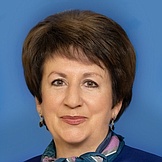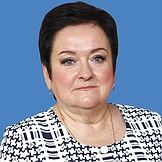Regional flags and emblems


PROFILE
Established 14 June 1783
Capital Sevastopol
The city of Sevastopol is part of the Southern Federal District
Area 900 sq km
Population 558 200 (2025)
Ethnic groups
(2020 National Census, %)
Russian – 90,11
Ukrainian – 5,56
Other – 4,33
Administrative divisions (2024):
Inner-city areas– 10
Geography and climate
The city of Sevastopol is located on the Heracles peninsula in the southwestern part of Crimea.
It borders on the Republic of Crimea in the northeast and southeast, and is flanked by the Black Sea coastline in the west and south.
The southern, inner and outer ranges of the Crimean mountains originate in the region.
The main rivers are the Belbek, Chernaya and Kacha. Sevastopol has more than 30 ice-free bays.
The climate is close to subtropical, like in the southern coast of Crimea, and has two microclimatic subzones that divide the city in half along the border of Cape Fiolent: in the foothills, the climate is comparatively mild, costal, or moderately continental; on the southeast coast, it is of the subtropical Mediterranean type.
The average monthly temperatures stay above zero throughout the year. The coldest month is February, with the average temperature +2.8°С, and the warmest is July, with the average temperature +22.4°С.
There are three nature sanctuaries in the city: Cape Fiolent, Cape Aya, and Baidarsky; the Kazachya Bay Zoological sanctuary; Maksimova Dacha national park of regional significance, as well as coastal-water ecosystems and natural monuments.
Sevastopol is the main base of the Russian Navy on the Black Sea. Founded in 1783 as a sea fortress, the city of Sevastopol has become a major commercial and military seaport and a tourist centre.
Government
The legislative branch is represented by the Legislative Assembly of the City of Sevastopol, which is the permanent, representative and only legislative authority in the city. It has 24 deputies, elected for five years, with eight of them running in single-mandate constituencies and the other 16 in the single electoral district, where winners are identified in proportion to the number of votes cast for lists of candidates for deputies.
The current Sevastopol Legislative Assembly was elected in September 2024. Its term expires in September 2029.
The executive branch is represented by the Governor of the City of Sevastopol, the Government of Sevastopol and other executive authorities.
The Governor of the city of Sevastopol is the city’s highest-ranking official, heads the supreme executive authority, the Government of Sevastopol. The Governor is elected for five years by Russian citizens who permanently reside in the City of Sevastopol. The term of office of the current incumbent expires in September 2025.
The Government of Sevastopol is the top permanent executive authority in the city.
Economy and natural resources
The city has developed fishing and fish processing industries, ship-repairing and shipbuilding, developing tourism industry and well-established agriculture and the food industry, mostly wine making and horticulture.
Industry accounts for about 12% of the regional GDP in Sevastopol.
Manufacturing industries include machine building and metal processing, consumer goods production and the food industry.
The biggest industrial companies include Sevastopol Naval Plant, a subsidiary of Zvyozdochka Shiprepairing Centre; VALM-RUS SHIPYARD; Sorius Ship-Repair Enterprize; Molot Plant; Sevmormash-2M; Sevastopol Aircraft Plant; Musson-Morsviaz-Service DSPE; Akvalit; Balaklava Mine Group; Inkersstrom; and Inkerman Winery.
The local utilities sector is responsible for electricity generation and distribution, and gas and water supply, and includes combined heat and power stations.
Transport and communications account for more than 10% of the regional GDP. The city has a developed construction industry, as well as wholesale and retail trade and recreational services.
The Republic of Crimea and Sevastopol, a city of federal significance, are a free economic zone.
The most capital-intensive industries in which investment projects are implemented as part of the free economic zone development are power generation, transport and resorts.
The mineral resources base of the region includes fluxing and sawn limestone, clay rock, ferrous and non-ferrous metals, optical calcite, mineral (phosphate) fertilisers, and underground potable and technological waters. There are 86 proven underground fresh water sources and 320 registered artesian mineral water wells.
Culture and tourism
Sevastopol is a city of rich cultural traditions. There are more than 2,000 landmarks of history and culture in the area. Most of the sights are associated with the city’s defence during the Crimean and Great Patriotic Wars, primarily the famous panorama, “Defence of Sevastopol in 1854−1855.”
There is also a famous Crimean War landmark: the sunken ships that blocked the passage to the Sevastopol Bay for the enemy flotilla. The Malakhov Kurgan memorial, the Storm of Sapun Mountain on 7 May 1944 Diorama and the Legendary 35th Coastal Battery Trench also deserve attention. Work is underway to implement a project to build a version of the Patriot military theme park.
Sevastopol is often referred to as the city of the Russian Navy’s glory since many important historical events are associated with the brilliant victories of the Russian fleet. This is reflected in the city architecture and its street names.
The world famous Tauric Chersonese (Khersones Tavrichesky) State Historical Archaeological Museum and Reserve has been included in UNESCO’s top 100 World Heritage Sites. Sevastopol is famous for its monasteries and cathedrals, especially the St Vladimir Cathedral − the place where St Vladimir was baptised in Chersonese, as well as the St George and Inkerman monasteries.
The city is developing its hotel and tourism industry. It now has about 100 hotels. The city’s favourable geographic position, mild climate, high resource potential and experience in international cooperation create excellent opportunities for the development of Sevastopol as an attractive commercial, industrial and tourist centre in southern Russia.


